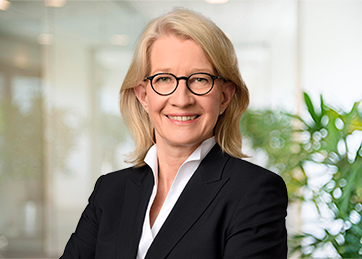(Only) distance lump sum for journeys of a pilot to the airport as his primary place of work
Employee's daily expenses for travel between their home and their primary place of work – i.e. the one-way distance (distance lump sum) – are generally to be claimed as income-related expenses at a flat rate of EUR 0.30 for the first 20 kilometres of distance within the respective income category; from the 21st kilometre onwards, the distance lump sum increases to EUR 0.35 (2021) or EUR 0.38 (2022 to 2026). On the other hand, work-related travel expenses are deductible at the flat rates for the actual kilometres driven – round trip – in accordance with the Federal Travel Expenses Act as the highest mileage allowance. In its decision of December 4, 2024 (case no. 12 K 1369/21), the Fiscal Court Cologne clarified whether the (home) airport assigned to a pilot by his employer constitutes a so-called primary place of work under certain conditions, so that his expenses for travelling there are not deductible as travel expenses, but only as the so-called distance lump sum.An employed pilot was assigned to an airport 150 km away from his home in accordance with his employment contract with an airline. He travelled the distance for his long-haul flights in the dispute year 2018 mainly by car and arrived there approximately two hours before each departure. The pilot completed the electronic flight preparation in his home office; at the airport building, the pilot merely confirmed his presence in writing, checked in electronically, briefly discussed the upcoming flight with the crew and, if necessary, obtained updates on the flight data before boarding the aircraft, usually about an hour and three quarters before departure. In the cockpit, the pilot completed all safety-related tasks for the flight (e.g. entering the flight data into the aircraft system via cable, communicating the specific amount of fuel to be refuelled, monitoring the refuelling process, checking the aircraft for flight safety).
In his 2018 income tax return, he claimed 73 trips to the stationing airport as business trips, each covering the actual distance of 300 km, at a flat rate of EUR 0.30 as income-related expenses from his employment income. However, the tax office only considered the one-way distance to the airport at EUR 0.30 per 150 km in its assessment; it considered this – as did the FG hereafter – to be the pilot's primary place of work.
This refers to the employer's fixed, operational facility to which the employee is permanently assigned. It consists of spatially grouped material resources that serve the employer's activities and are either permanently fixed to the ground or predominantly location bound. In this respect, a large area with developed infrastructure, such as an airport, may also be considered. Even if this consists of many separate operational facilities such as buildings and other terrain – like access and departure routes, runways and aircraft parking spaces – it can be spatially delimited in an organisational, technical or economic context with the employer's operational activities – in this case, the airline's operations. Assignment to such a facility is based on service and labour law provisions as well as the agreements and instructions that implement them. Permanent assignment is generally assumed in the case of an indefinite employment relationship or if the employee has been working for more than 48 months.
In the present case, in the opinion of the Fiscal Court, both the actual assignment of the pilot and its permanence were indisputably fulfilled. The fact that the pilot did not visit his base airport every working day is just as irrelevant as his so-called dead-head flights, in which the pilot first travels to another airport as a passenger before starting his flight from there.
In addition, the pilot worked at the airport to an extent sufficient to fulfil his employment contract and in line with his job description, so that the airport could be classified as his primary place of work. The Fiscal Court left open the question of whether the pilot's activities carried out in the airport building were sufficient for this purpose. This is because the typical activities of a pilot also include those carried out in the aircraft (cockpit) until it takes off from the runway, as these take place on the airport premises as a large-scale, stationary operational facility. The Fiscal Court focused on all of the pilot's duties under his employment contract at the ‘large-scale (stationary) place of work at the airport’, regardless of the fact that the pilot is partially in a mobile vehicle (aircraft).
Notice:
The appeal against the decision is pending before the German Federal Fiscal Court (BFH) (case no. VI R 4/25). This is the first time, as far as can be seen, that the BFH has had the opportunity to clarify the question of whether, under the current legal situation, the activities of a pilot in the cockpit of an aircraft are to be assigned to the large-scale and fixed place of work that is the airport. In its earlier case law, the court had classified the so-called briefing rooms of an airline at the airport (BFH, decision of April 11, 2019, case no. VI R 40/16) as the then newly introduced concept of the ‘primary place of work’ and thus only allowed the distance lump sum to be deducted. However, according to its decision of February 26, 2014 (case no. VI R 68/12 (NV)) concerning the old legal situation, a pilot's cockpit was not a regular place of work due to its lack of permanence, and the pilot's corresponding travel expenses were to be recognised as business travel. Against this background, clarification by the BFH in the context of the now pending appeal proceedings is to be welcomed. Similar cases should be kept open.

